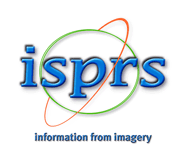- Article
(3885 KB) - Metadata XML
- December 08, 2025
- |
- Home
- |
- Sitemap
- |
- The ISPRS Foundation
- |
- 𝕏
The International Archives of the Photogrammetry, Remote Sensing and Spatial Information Sciences
Articles | Volume XLVI-1/W1-2021
https://doi.org/10.5194/isprs-archives-XLVI-1-W1-2021-65-2022
© Author(s) 2022. This work is distributed under
the Creative Commons Attribution 4.0 License.
the Creative Commons Attribution 4.0 License.
https://doi.org/10.5194/isprs-archives-XLVI-1-W1-2021-65-2022
© Author(s) 2022. This work is distributed under
the Creative Commons Attribution 4.0 License.
the Creative Commons Attribution 4.0 License.
EXPLORING DESIS FOR INLAND WATER QUALITY IN SPANISH RESERVOIRS
A. B. Ruescas
Image Processing Laboratory, Universitat de Valencia, Spain
M. Pereira-Sandoval
Image Processing Laboratory, Universitat de Valencia, Spain
A. Perez-Suay
Image Processing Laboratory, Universitat de Valencia, Spain
Related authors
Jorge García-Jiménez, Ana B. Ruescas, Julia Amorós-López, and Raphaëlle Sauzède
Ocean Sci., 21, 1677–1694, https://doi.org/10.5194/os-21-1677-2025, https://doi.org/10.5194/os-21-1677-2025, 2025
Short summary
Short summary
Estimation of particulate organic carbon (POC) relies on proxies like the particulate backscattering coefficient (bbp) derived from BioGeoChemical-Argo (BGC-Argo) floats and satellite data. BGC-Argo floats provide global insights into vertical bio-optical dynamics. This study integrates Sentinel-3 OLCI (Ocean and Land Colour Instrument) data and machine learning approaches to improve bbp estimates in the top 250 m of the water column. The results differ based on the dynamics of the study areas.
R. Sauzède, J. E. Johnson, H. Claustre, G. Camps-Valls, and A. B. Ruescas
ISPRS Ann. Photogramm. Remote Sens. Spatial Inf. Sci., V-2-2020, 949–956, https://doi.org/10.5194/isprs-annals-V-2-2020-949-2020, https://doi.org/10.5194/isprs-annals-V-2-2020-949-2020, 2020
Jorge García-Jiménez, Ana B. Ruescas, Julia Amorós-López, and Raphaëlle Sauzède
Ocean Sci., 21, 1677–1694, https://doi.org/10.5194/os-21-1677-2025, https://doi.org/10.5194/os-21-1677-2025, 2025
Short summary
Short summary
Estimation of particulate organic carbon (POC) relies on proxies like the particulate backscattering coefficient (bbp) derived from BioGeoChemical-Argo (BGC-Argo) floats and satellite data. BGC-Argo floats provide global insights into vertical bio-optical dynamics. This study integrates Sentinel-3 OLCI (Ocean and Land Colour Instrument) data and machine learning approaches to improve bbp estimates in the top 250 m of the water column. The results differ based on the dynamics of the study areas.
R. Sauzède, J. E. Johnson, H. Claustre, G. Camps-Valls, and A. B. Ruescas
ISPRS Ann. Photogramm. Remote Sens. Spatial Inf. Sci., V-2-2020, 949–956, https://doi.org/10.5194/isprs-annals-V-2-2020-949-2020, https://doi.org/10.5194/isprs-annals-V-2-2020-949-2020, 2020

The International Society for Photogrammetry and Remote Sensing is a non-governmental organization devoted to the development of international cooperation for the advancement of photogrammetry and remote sensing and their applications. The Society operates without any discrimination on grounds of race, religion, nationality, or political philosophy.
Useful Links
Useful External Links
Our Contact
c/o
Leibniz University Hannover
Institute of Photogrammetry and GeoInformation
Nienburger Str. 1
D-30167 Hannover
GERMANY
Email: isprs-sg@isprs.org




